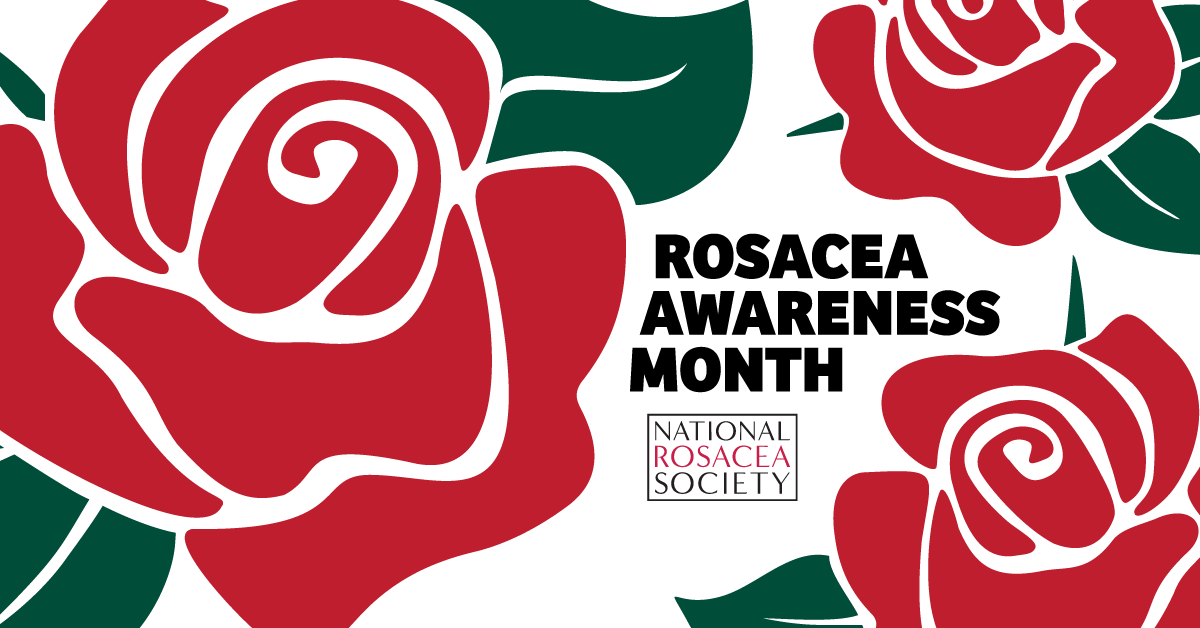 While rosacea sufferers enjoy a wider range of therapeutic options than ever before, without proper skin care they may not get the most out of treatment, dermatologists warn. The National Rosacea Society (NRS) has designated April as Rosacea Awareness Month to educate the public on this chronic facial skin disorder estimated to affect more than 16 million Americans, and to urge those who suspect they may have it to see a dermatologist for diagnosis, treatment and guidance on gentle skin care.
While rosacea sufferers enjoy a wider range of therapeutic options than ever before, without proper skin care they may not get the most out of treatment, dermatologists warn. The National Rosacea Society (NRS) has designated April as Rosacea Awareness Month to educate the public on this chronic facial skin disorder estimated to affect more than 16 million Americans, and to urge those who suspect they may have it to see a dermatologist for diagnosis, treatment and guidance on gentle skin care.
“Skin care and cosmetics are an often underappreciated but important element in rosacea therapy,” said Dr. Hilary Baldwin, associate professor of dermatology at Rutgers Robert Wood Johnson Medical School and a member of the NRS medical advisory board. “The use of gentle cleansers, moisturizers that help repair the skin moisture barrier, and sunscreens that protect against rosacea flare-ups can work to support and even augment medical therapy for the disease.”
The most common individual sign of rosacea is persistent redness on the central part of face — the cheeks, nose, forehead and chin. The redness may be accompanied by itching, burning or stinging, and sufferers may also experience bumps and pimples or develop tiny visible blood vessels on their skin. Prior to diagnosis, many rosacea sufferers may turn to skin care products and cosmetics as a way to treat or cover up these signs and symptoms, mistaking them for a sunburn or acne.
However, harsh cleansers, acne medications and even bar soap may make matters worse by irritating or drying out the skin and damaging the moisture barrier. Prolonged use of some topical whitening or lightening creams may lead to a painful and disruptive condition known as steroid-induced rosacea. Meanwhile, even many gentle skin care and cosmetic products may contain ingredients that could trigger a rosacea flare-up.
In an NRS survey of 1,104 rosacea patients, 82% reported that certain skin-care products and cosmetics aggravated their condition, and 70% said there were specific ingredients that irritated their skin. The most common irritants were astringent alcohol (63%), perfumes or fragrances (57%), witch hazel (31%) and menthol (30%). Around a quarter of respondents were affected by peppermint or eucalyptus oil, dyes and pigments, sulfates, and parabens or other preservatives.
“The use of skin care products and cosmetics can help minimize the appearance and effects of rosacea, but poorly selected products may make it worse,” Dr. Baldwin said. “Fortunately, there are many products today that are formulated to be suitable to sensitive, rosacea-prone skin, without ingredients that may cause flare-ups. These may be used in combination with prescription therapies and procedures that more directly address the signs and symptoms of the disease.”
The National Rosacea Society Expert Committee published updated management options for rosacea in 2019, including the use of gentle cleansers and nonocclusive moisturizers that do not irritate their skin.1 Because sun exposure may be a leading influence on the development of flushing and redness, patients are also advised to always use sunscreens, preferably mineral-based products that contain zinc oxide or titanium dioxide, because they provide physical protection rather than potentially irritating chemical protection.
The best results are achieved when patients and their doctors work together to identify appropriate therapies and monitor their progress, Dr. Baldwin added.
The NRS recently launched a new Seal of Acceptance program to identify skin care and cosmetic products that may be suitable for people who suffer from rosacea. More information about the Seal and a directory of accepted products may be found online at rosacea.org/seal-of-acceptance.
During Rosacea Awareness Month and throughout the year, the NRS will conduct public education activities to reach the many millions of rosacea sufferers who may not realize they have a medical condition that can be treated, emphasizing the warning signs and urging those who suspect they may have rosacea to see a dermatologist. Bulk quantities of educational materials are available to health professionals for their patients through the NRS website at rosacea.org or by writing the National Rosacea Society, 4619 N. Ravenswood Ave, Suite 103, Chicago, IL 60640; calling the NRS toll free at 1-888-NO BLUSH; or via e-mail at info@rosacea.org. Those interested in spreading awareness during the month of April are encouraged to visit the official Rosacea Awareness Month landing page at rosacea.org/ram for ways in which they can participate.
Reference
1. Thiboutot D, Anderson R, Cook-Bolden F, et al. Standard management options for rosacea: the 2019 update by the National Rosacea Society Expert Committee. J Am Acad Dermatol 2020;82(6):1501–1510. doi:10.1016/j.jaad.2020.01.077